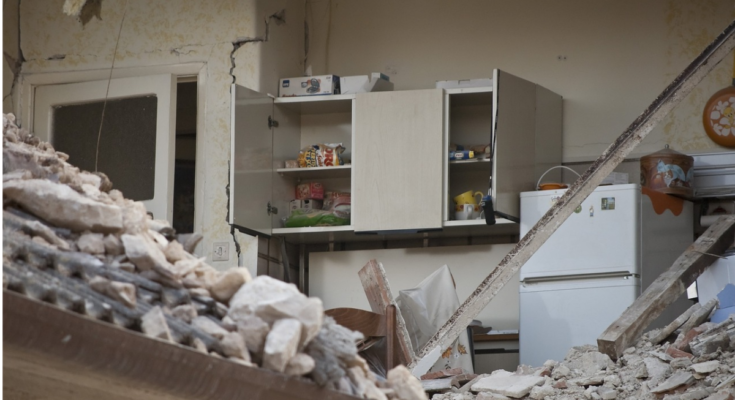Excess Earthquake Insurance: Earthquakes are some of the most devastating natural disasters, capable of causing widespread destruction and significant financial losses. Standard earthquake insurance policies are designed to provide basic protection, but they often come with coverage limits that may not be sufficient for high-value properties, businesses, or homeowners with extensive assets. This is where excess earthquake insurance comes into play. Excess earthquake insurance provides additional layers of protection, ensuring that policyholders have adequate coverage beyond the limits of their primary insurance policy.
In this comprehensive guide, we will explore what excess earthquake insurance is, why it is important, what it covers, and how to choose the right policy to suit your needs.
What Is Excess Earthquake Insurance?
Excess earthquake insurance is a supplementary policy that provides coverage above and beyond the limits of your primary earthquake insurance policy. It is designed for homeowners, businesses, and property owners who need additional protection to cover high-value assets, expensive properties, or significant financial risks associated with earthquakes.
This type of insurance acts as a safety net, ensuring that policyholders are not left with out-of-pocket expenses after reaching the coverage limits of their standard earthquake insurance policy. Excess earthquake insurance is particularly beneficial for:
- Owners of high-value residential properties
- Businesses with expensive equipment or inventory
- Condominium associations with shared risks
- Property investors with multiple properties
Why Is Excess Earthquake Insurance Important?
There are several reasons why excess earthquake insurance is a critical component of comprehensive risk management:
1. Coverage Limitations in Standard Policies
Standard earthquake insurance policies often have coverage limits that may not fully account for the cost of repairing or rebuilding high-value properties. Excess insurance fills this gap.
2. High Reconstruction Costs
Earthquake damage can be extensive, requiring significant funds for rebuilding, repairing infrastructure, and replacing belongings. Excess insurance ensures these costs are covered.
3. Increased Risk in High-Value Areas
Properties located in earthquake-prone regions, such as California, Oregon, Washington, and Alaska, are at greater risk. Excess insurance provides peace of mind for property owners in these areas.
4. Protection for Businesses
Businesses often have substantial assets, such as equipment, inventory, and facilities, that require additional protection. Excess earthquake insurance ensures that these assets are covered.
5. Safeguarding Financial Stability
Without sufficient coverage, property owners may face financial ruin in the aftermath of a major earthquake. Excess insurance minimizes this risk.
What Does Excess Earthquake Insurance Cover?
Excess earthquake insurance provides extended coverage for a wide range of risks and expenses associated with earthquakes. The specifics of coverage may vary depending on the insurer and the policy, but common areas of coverage include:
1. Extended Dwelling Coverage
Covers the cost of rebuilding or repairing the structure of a home or commercial property beyond the limits of the primary insurance policy.
Example: If your primary policy covers up to $500,000 and your rebuilding costs total $750,000, the excess policy covers the additional $250,000.
2. Additional Personal Property Protection
Provides coverage for high-value personal belongings, such as:
- Furniture
- Electronics
- Jewelry and artwork
- Antiques and collectibles
3. Increased Business Interruption Coverage
Offers additional financial support for businesses that experience lost income or operational downtime due to earthquake damage.
4. Loss Assessment for Condominium Owners
Covers your share of costs assessed by a condominium association for earthquake damage to common areas or shared infrastructure.
5. Additional Living Expenses (ALE)
Extends the limits for temporary living expenses if your home becomes uninhabitable, including:
- Hotel stays
- Meal expenses
- Temporary housing rentals
6. Enhanced Liability Protection
Provides additional liability coverage in case you are found responsible for injuries or damages caused to others during an earthquake.
What Is Not Covered by Excess Earthquake Insurance?
Excess earthquake insurance is designed to extend the coverage of a primary policy, but it does not cover every risk. Common exclusions include:
- Flood and Tsunami Damage: Floods and tsunamis caused by earthquakes are not covered. Separate flood insurance is required for these events.
- Wear and Tear: Damage resulting from regular wear and tear, lack of maintenance, or pre-existing conditions is excluded.
- Vehicles: Earthquake-related damage to vehicles is not covered. Comprehensive auto insurance may provide this protection.
- Intentional Damage: Damage caused intentionally or due to negligence is excluded.
- Non-Earthquake Events: Other natural disasters, such as hurricanes, tornadoes, or wildfires, are not covered under earthquake insurance.
How Does Excess Earthquake Insurance Work?
Excess earthquake insurance works as a secondary layer of protection, kicking in once the coverage limits of the primary policy have been exhausted. Here is how it typically works:
1. Primary Policy Coverage
Your primary earthquake insurance policy covers damages and losses up to its coverage limit.
2. Excess Policy Activation
Once the primary policy’s limit is reached, the excess policy covers additional costs, up to its own limit.
3. Deductibles
Excess earthquake insurance policies may have separate deductibles, which are often expressed as a percentage of the insured value of the property.
4. Claims Process
In the event of an earthquake, policyholders must:
- Document the damage with photos and written descriptions.
- File claims with both the primary and excess insurance providers.
- Work with adjusters to assess damages and determine payouts.
How Much Does Excess Earthquake Insurance Cost?
The cost of excess earthquake insurance depends on several factors, including:
- Location: Properties in high-risk areas, such as near fault lines, typically have higher premiums.
- Property Value: Higher-value properties require more extensive coverage, which increases premiums.
- Coverage Limits: Policies with higher coverage limits will have higher premiums.
- Deductibles: Higher deductibles result in lower premiums but require more out-of-pocket costs in the event of a claim.
- Construction Type: The age and construction materials of the property can influence premiums. Homes built to withstand earthquakes may have lower premiums.
Average Cost:
- Low-risk areas: $200-$500 annually
- Moderate-risk areas: $500-$1,500 annually
- High-risk areas: $1,500-$5,000 or more annually
Who Needs Excess Earthquake Insurance?
Excess earthquake insurance is recommended for:
- High-Value Homeowners: Owners of luxury or custom-built homes with significant reconstruction costs.
- Business Owners: Businesses with substantial assets, inventory, or equipment that exceed standard coverage limits.
- Condominium Associations: Associations managing large complexes or shared infrastructure in earthquake-prone areas.
- Property Investors: Investors with multiple properties or rental units that require additional protection.




